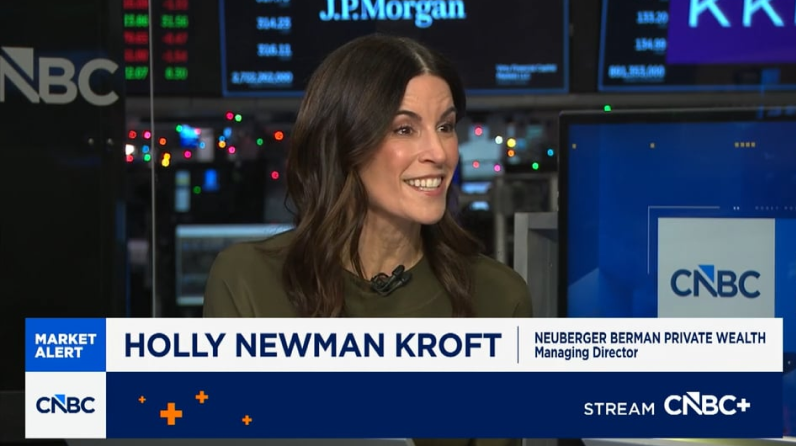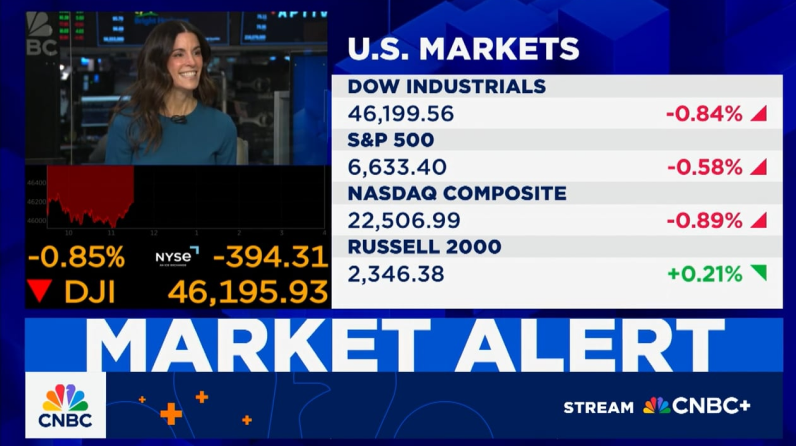

With still-robust economic growth and strong labor markets, the Fed has cover to be patient in its quest; the challenge lies in how patient investors can be.
As expected, the Federal Reserve (Fed) announced no change in the target range of the federal funds rate of 5.25 – 5.50% for the sixth straight meeting in a unanimous decision for the 15th straight meeting. The Federal Open Market Committee (FOMC) statement did outline a reduction in the pace of quantitative tightening: the cap on the amount of Treasuries rolling off the balance sheet on a monthly basis is to be reduced from $60 billion to $25 billion while the target for MBS was held steady at $35 billion.
More importantly in our view, however, a pause in progress in the disinflationary trend that appeared to be intact coming into 2024 was evident in the updated statement as the FOMC acknowledged that “there has been a lack of further progress toward the Committee’s 2% inflation objective.” The statement also repeated language that the FOMC is unlikely to cut rates “until it has gained greater confidence that inflation is moving sustainably toward 2%.”
In terms of the Fed’s dual mandate, the statement noted that the risks to achieving its goals on both inflation and employment “have moved toward better balance over the past year,” likely a nod to a decline in job openings, quits and wage growth over the last several months. As it relates to more recent data such as GDP and ISM Manufacturing PMI, which have been admittedly soft, the FOMC appeared somewhat unbothered by indications of a slowdown. In our view, this was evident from the opening line of the statement, which cited that “economy activity has continued to expand at a solid pace.”
In our view, during the press conference, Fed Chair Jerome Powell amplified four main takeaways:
- He believes that the next move for the Fed, when there is a move, will be a cut. Despite several opportunities to acknowledge that policy was not sufficiently restrictive or that the recent stalling of progress could lead to a re-acceleration in inflation, and, therefore, a hike could be necessary, Powell did not bite.
- It is clear that the FOMC is concerned about the lack of progress in terms of prices coming down. However, the FOMC believes that the current policy stance can still yield 2% inflation. He pushed back rather vehemently at the idea that higher rates should be more of a concern for the Fed given the impact on lower income consumers; rather, he stated that inflation is the true enemy and what the Fed will remain focused on fixing.
- Powell’s comments around the labor market speak to a continued emphasis on the dual mandate. While he acknowledged that wage growth was a significant factor in terms of the run-up in prices, he also noted that both immigration (and the increase in the participation rate) as well as productivity improvements could help to counteract that pressure even if the unemployment rate remains low. Powell also acknowledged that any meaningful, unexpected deterioration in employment could be the catalyst for more accommodative policy even if inflation remains stickier.
- Powell represented the apolitical nature of the Fed, challenging the audience to look back in terms of the Fed’s actions during election years. He also noted that the timeline for cuts will continue to be data-dependent and not contingent on timing of the election or any other exogenous factors.
Reaction to the press conference in the markets likely reflects the fear that Chair Powell would be more hawkish in his comments than he was; equities and bonds both rallied as 2-year yields fell. With that said, fewer than two rate cuts are being priced in at this point and we think it is difficult to see a path to more than three rate cuts by the end of the year without either the type of disinflation exhibited in 2023 and/or a deterioration in growth. With still-robust economic growth and strong labor markets, we believe the Fed has cover to be patient in its quest; the challenge lies in how patient investors can be as they wait for the stimulative impact that lower interest rates are likely to bring.


VIDEO
The Kantor Group | Charles Kantor’s Year-End Reflections and Key Questions as We Head Into 2026

INSIGHTS
CIO Notebook: Dual Release of Delayed Non-Farm Payrolls Likely Supports Another Cut

INSIGHTS
Using Tax-Free Gifts for Wealth Transfer

INSIGHTS
CIO Notebook: Powell Plays the Middle as Fed Cuts Rates

MARKET COMMENTARY
Giving Thanks for Market Strength

INSIGHTS
CIO Notebook: September U.S. Non-Farm Payrolls Further Complicate the Narrative

VIDEO
Holly Newman Kroft Featured on CNBC’s Money Movers November 18
VIDEO
Plan for Peace of Mind with Our Estate Planning Organizer
MARKET COMMENTARY
Some Tricks, More Treats
INSIGHTS
CIO Notebook: Markets Rattled as Fed Leans Hawkish
REPLAY
Private Wealth Investment Outlook 4Q25
INSIGHTS
CIO Notebook: September Core CPI Comes in Late but Light
INSIGHTS
Charitable Fundraising: Moving Beyond Cash
IMPORTANT INFORMATION:
This material is provided for informational purposes only and nothing herein constitutes investment, legal, accounting or tax advice, or a recommendation to buy, sell or hold a security. This material is general in nature and is not directed to any category of investors and should not be regarded as individualized, a recommendation, investment advice or a suggestion to engage in or refrain from any investment-related course of action. Any views or opinions expressed may not reflect those of the firm as a whole. Neuberger Berman products and services may not be available in all jurisdictions or to all client types. Diversification does not guarantee profit or protect against loss in declining markets. Investing entails risks, including possible loss of principal. Investments in private equity are speculative and involve a higher degree of risk than more traditional investments. Investments in private equity are intended for sophisticated investors only. Unless otherwise indicated, returns shown reflect reinvestment of dividends and distributions. Indexes are unmanaged and are not available for direct investment. Investing entails risks, including possible loss of principal. Past performance is no guarantee of future results.
Portfolio positioning views expressed herein are those of Neuberger Berman’s Private Wealth Investment Group, which may include those of the Neuberger Berman’s Asset Allocation Committee. Asset allocation and positioning views are based on a hypothetical reference portfolio. The Private Wealth Investment Group analyzes market and economic indicators to develop asset allocation strategies. The Private Wealth Investment Group works in partnership with the Office of the CIO. The Private Wealth Investment Group also consults regularly with portfolio managers and investment officers across the firm. The Asset Allocation Committee is comprised of professionals across multiple disciplines, including equity and fixed income strategists and portfolio managers. The Asset Allocation Committee reviews and sets long-term asset allocation models, establishes preferred near-term tactical asset class allocations and, upon request, reviews asset allocations for large, diversified mandates. Asset Allocation Committee members are polled on asset classes and the positional views are representative of an Asset Allocation Committee consensus. The views of the Asset Allocation Committee and the Private Wealth Investment Group may not reflect the views of the firm as a whole and Neuberger Berman advisers and portfolio managers may take contrary positions to the views of the Asset Allocation Committee or the Private Wealth Investment Group. The Asset Allocation Committee and the Private Wealth Investment Group views do not constitute a prediction or projection of future events or future market behavior. Defensive positioning generally means an underweight bias on allocations to risk assets such as equities and alternatives. Positioning views may change over time without notice and actual client positioning may vary significantly. Discussion of yield characteristics or total returns of different asset classes are for illustrative purposes only. Such asset classes, such as equities and fixed income, may have significantly different overall risk-return characteristics which should be consider before investing.
The information in this material may contain projections, market outlooks or other forward-looking statements regarding future events, including economic, asset class and market outlooks or expectations, and is only current as of the date indicated. There is no assurance that such events, outlook and expectations will be achieved, and actual results may be significantly different than that shown here. The duration and characteristics of past market/economic cycles and market behavior, including any bull/bear markets, is no indication of the duration and characteristics of any current or future be market/economic cycles or behavior. Information on historical observations about asset or sub-asset classes is not intended to represent or predict future events. Historical trends do not imply, forecast or guarantee future results. Information is based on current views and market conditions, which will fluctuate and may be superseded by subsequent market events or for other reasons.
Discussions of any specific sectors and companies are for informational purposes only. This material is not intended as a formal research report and should not be relied upon as a basis for making an investment decision. The firm, its employees and advisory accounts may hold positions of any companies discussed. Nothing herein constitutes a recommendation to buy, sell or hold a security. It should not be assumed that any investments in securities, companies, sectors or markets identified and described were or will be profitable. Investment decisions and the appropriateness of this content should be made based on an investor's individual objectives and circumstances and in consultation with his or her advisors.
Neuberger Berman Investment Advisers LLC is a registered investment adviser.
The “Neuberger Berman” name and logo are registered service marks of Neuberger Berman Group LLC